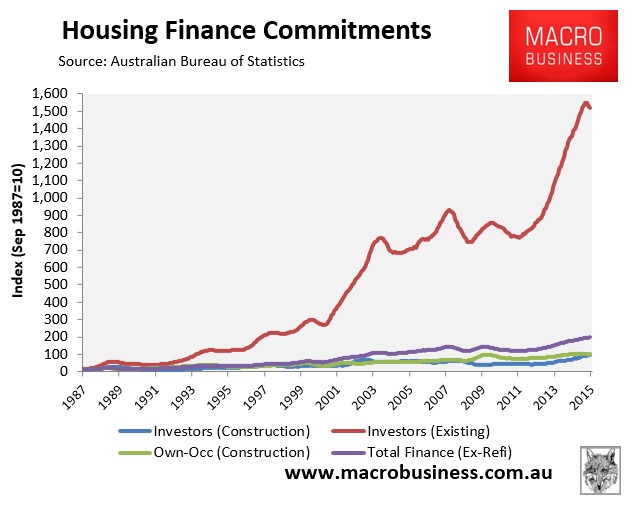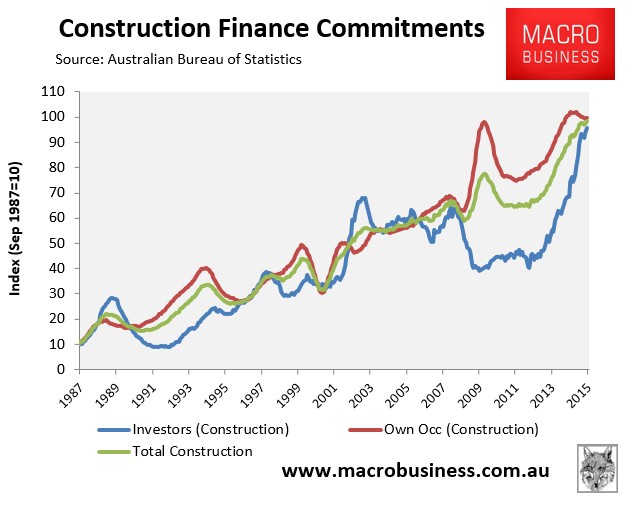The Real Estate Institute of Australia (REIA) in conjunction with the Adelaide Bank has released its housing affordability index for the December quarter, which noted that “housing affordability” (read mortgage affordability) has hit its worst level in three years:
REIA President Neville Sanders says, “The latest Adelaide Bank/REIA Housing Affordability Report shows that the proportion of median family income required to meet average loan repayments was 32.4%, which is the worst level since the December quarter of 2012. Marginally lower interest rates did not curb the deterioration in affordability driven by rising loans and only modest increases in income. Two states, New South Wales and Victoria, now have average loan sizes exceeding the $400,000 mark.”
Alarmingly, most states and territories saw declines in housing affordability. The only quarterly improvement was seen in the Northern Territory while no change was recorded in Queensland.”
“Once again, New South Wales was the least affordable state or territory in which to buy a home with a further increase in the already highest proportion of the median family income needed to meet average monthly loan repayments…
Yet despite mortgage affordability deteriorating so significantly, despite mortgage rates near all-time lows, the REIA has continued its scare campaign against Labor’s negative gearing policy, arguing that it would magically simultaneously reduce housing affordability and raise rents [my emphasis]:
The recently announced intention of the Opposition to limit negative gearing to newly constructed investment properties will exacerbate the affordability problem. Should it be implemented this change is likely to add considerable turmoil and volatility to the rental property and housing markets. Limiting negative gearing to new dwellings will only add a distortion that reduces investment in housing, erode housing affordability and put upward pressure on rents,” concluded Mr Sanders.
The REIA has based its scare campaign on research that it purchased from ACIL Allen Consulting, which I thoroughly debunked last year.
As noted at the time, ACIL Allen Consulting has resorted to the ultimate statistical trickery in arguing that negative gearing has contributed to a more than seven-fold increase in investment in new construction, which sounds impressive until it is compared against the other forms of housing finance (see next chart).

Since negative gearing was reinstated in 1987, the value of loans to investors in new construction has been dwarfed by loans to investors in existing dwellings. Even worse, they have also lagged behind the overall value of housing finance commitments (ex-refinancings), as well as owner-occupied investment in new construction (see next chart).

Given the above facts, it is highly misleading for the REIA to suggest that negative gearing has encouraged new construction when every other form of finance has grown even stronger since negative gearing was reinstated in 1987.
Moreover, it is quite frankly ridiculous for the REIA to then argue that Labor’s policy to encourage investment into new construction, rather than existing dwellings, would somehow reduce affordability and raise rents. By reducing demand in existing dwellings and boosting supply, the very opposite is likely to occur.
The property lobby is all at sea over Labor’s policy and continues to resort to distorted logic, obfuscation and propaganda to stifle reform.

